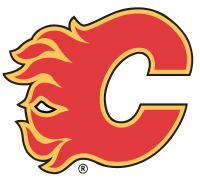 Has anyone noticed that ever since the NHL has decided to eliminate blindside hits, vicious hits have been popping up on the ice all across North America?
Has anyone noticed that ever since the NHL has decided to eliminate blindside hits, vicious hits have been popping up on the ice all across North America?In fact, ever since Matt Cooke ended Marc Savard's season earlier this month, I've seen a lot more health-threatening injuries across the board.
On Sunday, March 21, Daymond Langkow was taken off the ice during a game against the Minnesota Wild in a stretcher. He was hit by Greg Zanon, and though it was a hit from the front and perfectly acceptable within NHL rules, the force of the hit caused Langkow to flip over and land on the ice awkwardly on his lower neck area. Langkow was taken to hospital and kept overnight.
During a match-up between the Pittsburgh Penguins and the Tampa Bay Lightning, Steve Downie pulled a slew-foot move that bent Sidney Crosby's leg out from behind him, resulting in a short absence from the ice for the Penguins' captain.
And who can forget the check James Wisniewski delivered on Brent Seabrook. Seabrook slumped to the ice so dramatically that it prompted rumours of embellishment. The rumours were squelched when it was discovered that Seabrook suffered a severe concussion and was not to return to the ice for the meantime.
So far, Wisniewski has received the harshest punishment of all the offenders: an 8-game suspension.
After the Marc Savard hit, several NHL players voiced their concerns over the subject of hard hits, and which ones should be deemed dirty or clean. Sidney Crosby, coming to the defense of teammate Matt Cooke, said the league and its players needed a clear distinction of what's acceptable and what's not, in order for players to remain safe and injury-free.
Now that there is a clear distinction, why isn't it being followed?
I know that hockey is a sport known for its aggressive nature, and to take bone-rattling hits out of the game would be to change the game completely. But I, for one, don't see any fun in watching players get wheeled off the ice on stretchers, or having to miss out on a season for it.











No comments:
Post a Comment